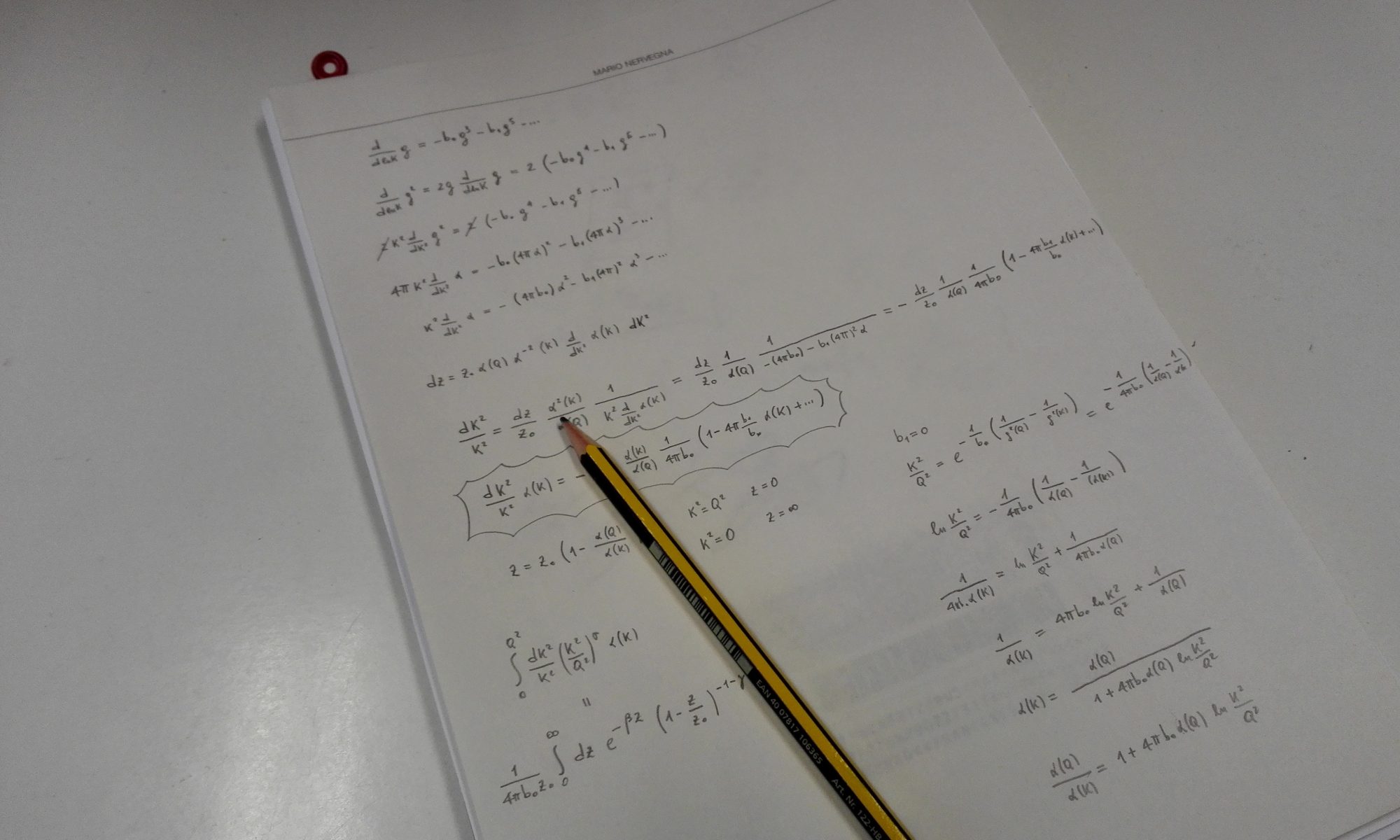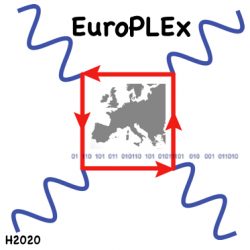EIC: an investment for the future
USA, Europe and a machine that will reveal the quantum secrets of Nature
Lorenzo Barca (EuroPLEx fellow, University of Regensburg)
EIC is the acronym for Electron-Ion Collider, a particle accelerator that will be built over the next ten years at the BNL (Brookhaven National Laboratory). It is considered a bridge to the physics of the future, since it will try to prove or disprove current theories of subnuclear physics.
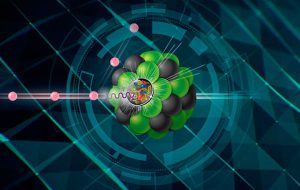 Electron-Ion collision [source: BNL]
Electron-Ion collision [source: BNL]
The estimated cost for its construction varies between 1.6 and 2.6 billion dollars, so it seems appropriate to ask whether it is worth it. What will be the effective benefit to the world’s population after having spent these public funds trying to make new scientific discoveries? According to a perhaps apocryphal anecdote, it is the same question that William Gladstone posed to Michael Faraday about his studies on electricity, to which Faraday quickly replied “I don’t know, Your Excellency, but I’m sure you’ll find a way to tax it.” Today we know the usefulness of electric current… and what are the benefits of the taxes that are levied on it!
What benefis can be obtained in the future from the construction of a new, and innovative, particle accelerator?
The great American physicist Leon Lederman stressed in one of his books the importance of scientific research, especially from an economic point of view. Many years ago he toyed with the idea of building the world’s largest particle accelerator in the US. This idea was rejected due to its excessive cost and development times. Not long after, the LHC particle collider was built at CERN in Europe, considered today the most powerful “microscope” in the world. Over time, it has not only covered the construction costs, but has also managed to connect many research centres, especially in Europe, with the aim of scientific progress, making Europe the most prolific continent in this sector.
Many of the most important technological revolutions, linked to medicine or engineering, have been due to advances in physics. Just remember Faraday’s studies on electricity and magnetism mentioned above, which led to a notable change in our lifestyle, or the discovery of positrons, the antiparticles of electrons, which are used in nuclear medicine. And how can one forget Einstein’s famous equation, which (unfortunately) gave rise to the development of the atomic bomb? Perhaps we have forgotten that the development of lasers was mainly associated with the discovery of the distinction between the half-integer (fermions) and integer (bosons) spin of quantum particles. The latter can condensate in the same quantum state, a discovery that aroused the curiosity of physicists and engineers and led to the development of lasers or boson condensates.
Today lasers are used very frequently in medicine, not only for aesthetic purposes in dermatology, but also in ophthalmology, physiotherapy, phototherapy and even as photodynamic therapy against some types of tumours. All this to summarise that science is a powerful tool, since it provides a potential lever towards a better future. Returning to the EIC particle accelerator, no scientist can at this time say with certainty what discoveries it will lead to, but if we learn from history we are aware that it will justify its cost, used in good hands.
The scientists involved in the construction of the EIC underline that, for the implementation of the project, it is necessary to achieve considerable advances in technologies that could be useful far beyond the joy of discovery in physics. Thanks to them it will be possible
• to attack tumour cells without damaging nearby healthy cells;
• to produce radioisotopes for diagnosis and treatment;
• to create more powerful microprocessors;
• to develop new types of batteries, solar cells, …;
• to develop new medicines and medical treatments.
What does the new EIC accelerator really want to check?
The Standard Model (SM) is a physical theory that encompasses three of the four known fundamental interactions of Nature: electromagnetic, strong nuclear, and weak interactions. Although this model describes very well all the experimental results to which it is applicable, it is not thought to be the “definitive theory”, first of all because it does not explain some of the phenomena observed both in astrophysical studies and in certain particle physics experiments, and secondly, because many scientists prefer to imagine an “elegant Universe” in which the basic theory to describe it is unique, which means reconciling the four known fundamental interactions (the three ones mentioned above plus gravity) into one.
What is the principle of operation of the future accelerator?
The facility will comprise two different accelerators: one will produce and accelerate electron beams, while the other will accelerate ionized nuclei of heavy atoms or high-energy proton beams.
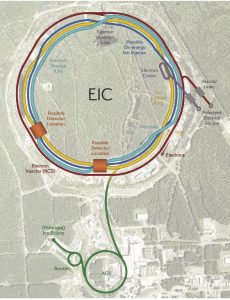 EIC’s plan [source: BNL]
EIC’s plan [source: BNL]
This operating principle is already known from the experiments of deep inelastic scattering of electrons by nucleons (protons or neutrons) carried out during the last century, which allowed us to obtain information about the nuclear structure: while electrons can be considered elementary particles, that is to say without internal structure, nucleons have a composite structure, inside which reside other particles, the “quarks”. The latter are fundamental particles inside the protons and neutrons that exchange “colours”, a type of charge similar to the electromagnetic one.
The exchange occurs through a mediator, called a “gluon”. The term derives from the English “glue” because the particle acts as a collagen for the other particles inside the matter. Has the reader ever wondered why the electromagnetic repulsion between the protons inside the atomic nuclei, all with positive charges, does not result in the disintegration of the nucleus?
Well, it is precisely thanks to the strong nuclear interaction that the nucleus remains intact: the strong nuclear interaction is about 100 times more intense than the electromagnetic one.
The quark types determine the charge of the composite particles and their “quantum numbers” (spin, isospin, parity, …). The most fascinating aspect is that inside these composite structures that we call protons and neutrons, pairs of quarks and antiquarks (i.e. antiparticles of quarks) and gluons, the mediators of the game, are continuously produced.
The following image shows a structure composed predominantly of two types of quark, red and blue, which float in a sea of other particles with other colours. Understanding in detail what will happen during collisions is the challenge of the new millennium because many questions remain to be answered with sufficient certainty, which arouse the interest of many scientists. My first question is:
What exactly is the internal structure of the proton and neutron?
It is a question that scientists have been asking for more than fifty years. In detail, the structure of the particles is defined by the so-called “form factors”, which describe the distribution of charges inside them and depend on the scale at which we are observing matter. The scale is defined by the configuration of our experiment: the higher the energy with which the particles are collided, the greater the depth to which we manage to study matter; that is what determines the power of our magnifying lens.
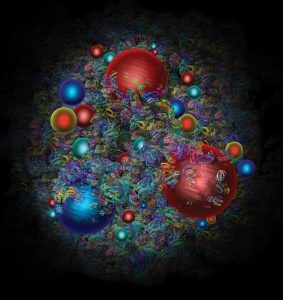 Artistic view of the internal structure of the proton [source: CERN].
Artistic view of the internal structure of the proton [source: CERN].
Although electromagnetic form factors have been investigated in various configurations, weak form factors, which describe the structure of particles from the point of view of weak interactions, are less well known. On the other hand, it is necessary to obtain a higher precision for the so-called axial form factor, since it is determinant for experiments on quasi-elastic scattering of neutrinos by protons, in which the interaction occurs through the weak force. Neutrinos are truly elusive particles, because they very rarely interact with matter, and only recently have experiments on neutrino oscillations proven that they are massive particles.
Despite their elusiveness, neutrinos are responsible for a lot of mischief. They could contain the answers to several long-standing cosmological and nuclear problems; in particular, the asymmetry between matter and antimatter. According to the Big Bang theory, particles and antiparticles were produced in equal amounts; however, the world we live in appears to be governed primarily by matter, if we put “dark matter” aside. But there are processes involving these elusive particles that could explain at least part of the asymmetry of our Universe.
One of the objectives of the network EuroPLEx, in which I am involved, is to improve our knowledge about neutrino-proton collisions, improving the precision of the calculations related to the complex internal structure of the proton. To do this we will use supercomputers such as the QPACE3 facility in Jülich, Germany: the fifth most powerful facility in the Green500 ranking of energy-efficient supercomputers when its first phase was inaugurated at the end of 2016, and still today an example of how to combine science with greater energetic and technological sustainability to advance in the understanding of the Universe at a fundamental level.
Original version of the article in Italian appeared in Quid (n. 2, 2020, page 56); also in Medium.com.
Translated also into Spanish for QuarkBits, a blog of Investigación y Ciencia.
